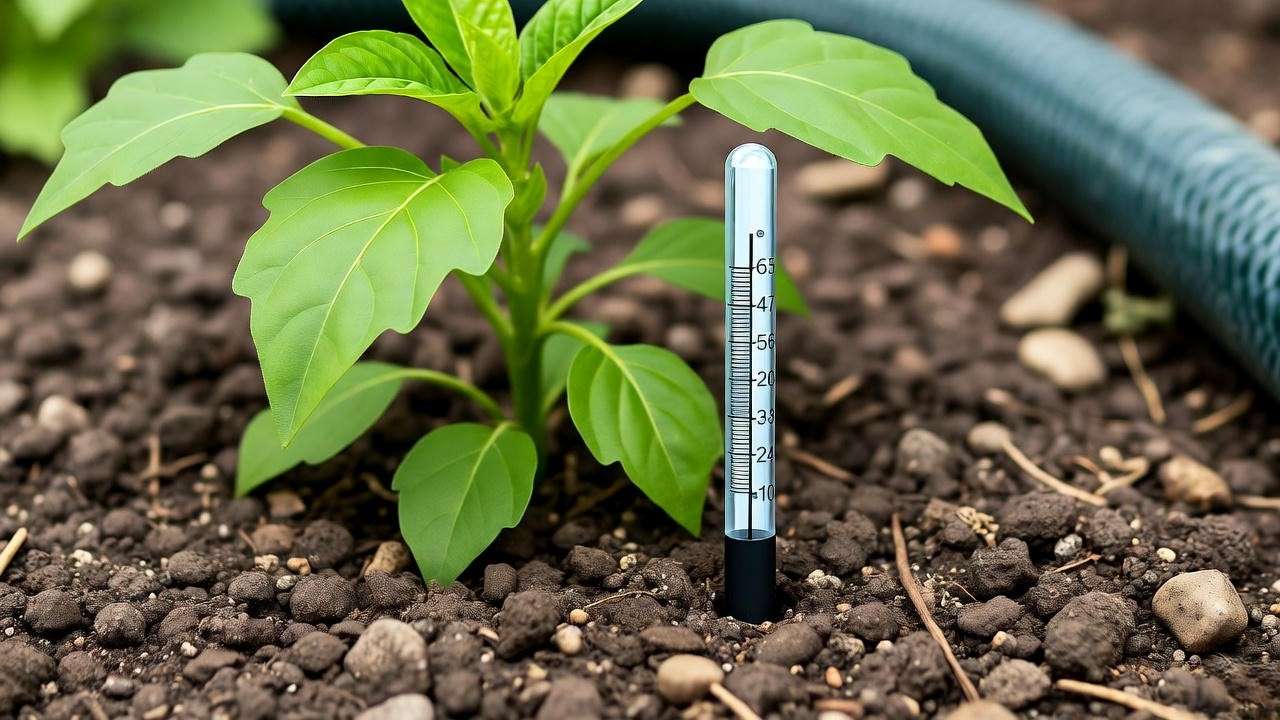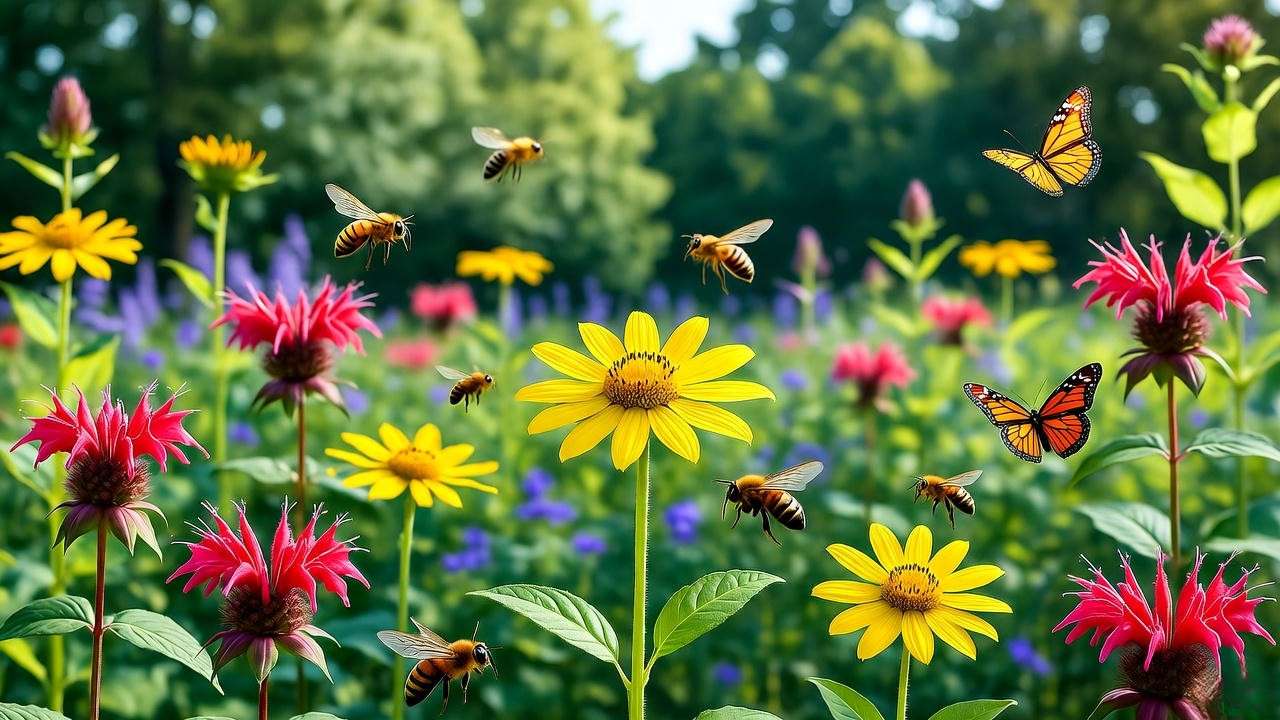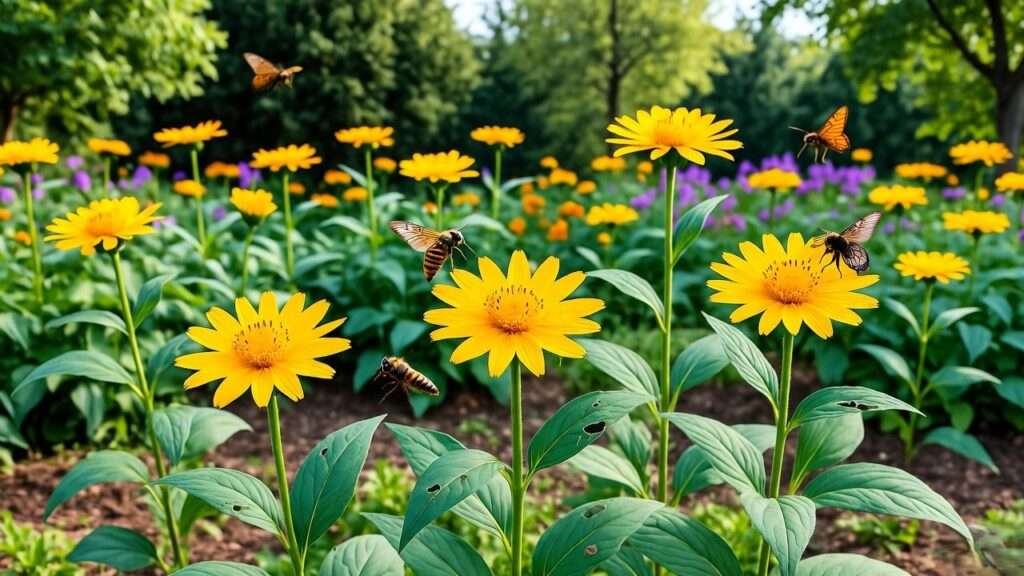Picture this: a vibrant garden bursting with golden blooms, buzzing with pollinators, and offering edible leaves that connect you to centuries-old traditions. Meet the sochan plant, a native North American treasure that’s captivating gardeners and foodies alike! Whether you’re dreaming of a low-maintenance perennial or eager to explore edible landscaping, mastering sochan plant care is your ticket to a thriving, sustainable garden. In this guide, we’ll share seven expert-backed tips to help you grow and nurture Rudbeckia laciniata with confidence. From planting to harvesting, we’ve got you covered with practical advice rooted in horticultural expertise and respect for this plant’s cultural heritage. Let’s dig in! 🌞
What Is the Sochan Plant? 🌼
A Native Treasure with Rich History
The sochan plant, scientifically known as Rudbeckia laciniata or cutleaf coneflower, is a perennial native to eastern North America. Its towering stems, often reaching 6-8 feet, are crowned with vibrant yellow flowers and deeply lobed leaves, making it a standout in any garden. Beyond its ornamental charm, sochan holds deep cultural significance. Cherokee communities have long harvested its tender young leaves for culinary dishes, a tradition that underscores its value as both a food source and a medicinal plant. According to ethnobotanist Dr. Mary Owen, “Sochan is a bridge between ecology and culture, embodying resilience and versatility.”

Why Grow Sochan?
Sochan is a gardener’s dream: it’s hardy, low-maintenance, and multi-purpose. Its bright blooms attract bees, butterflies 🐝, and other pollinators, boosting your garden’s biodiversity. As an edible plant, it offers nutrient-rich leaves for salads or cooked dishes. Plus, its adaptability to various climates (USDA zones 3-9) makes it accessible to many gardeners. Whether you’re passionate about native plants, sustainable gardening, or culinary exploration, sochan delivers beauty and function in spades.
Tip 1: Choosing the Perfect Spot for Your Sochan Plant 🌞
Sunlight and Location Needs
To thrive, sochan plants crave sunlight. Aim for a spot with 4-6 hours of direct sun daily, though they tolerate partial shade in hotter climates. “Sunlight fuels sochan’s robust growth and prolific blooms,” says native plant horticulturist Jane Doe from the Native Plant Society. Choose a location with good air circulation to prevent fungal issues, and avoid low-lying areas prone to waterlogging. Pair sochan with other pollinator-friendly plants like echinacea or monarda for a vibrant, eco-conscious garden.

Common Mistakes to Avoid
One common pitfall is overcrowding. Sochan’s sprawling growth requires 2-3 feet of space per plant to prevent competition for nutrients. Planting in overly shady spots can also stunt growth, leading to fewer flowers and weaker stems. Check your garden’s light patterns before planting to ensure success.
Tip 2: Soil Preparation for Sochan Success 🌍
Creating the Ideal Soil Environment
Sochan isn’t fussy, but it thrives in well-draining, loamy soil with a pH of 6.0-7.0. Before planting, enrich your soil with organic matter like compost or aged manure to boost fertility. Good drainage is critical—soggy roots can lead to rot, a common issue in heavy clay soils. If drainage is a concern, consider raised beds or mounding the soil to improve water flow.
Testing and Improving Soil
Not sure about your soil’s pH? Grab a DIY soil testing kit from your local garden center. If the pH is too acidic, add lime; if too alkaline, incorporate sulfur. For a sustainable boost, try worm castings or compost tea. These natural amendments nourish sochan without the environmental impact of synthetic fertilizers.
Tip 3: Planting Sochan the Right Way 🌱
Step-by-Step Planting Guide
Timing is everything when planting sochan. Early spring or fall is ideal, allowing roots to establish before extreme heat or cold. Here’s how to plant:
- Prepare the Site: Clear weeds and loosen soil to a depth of 12 inches.
- Sow Seeds or Transplant: For seeds, plant ¼ inch deep, spacing 2-3 feet apart. For seedlings, dig a hole twice the root ball’s width and plant at the same depth as the nursery pot.
- Water Thoroughly: Keep soil consistently moist (not soggy) for the first 2-3 weeks.
Seed vs. Seedling
Starting from seeds is budget-friendly but takes longer—expect blooms in the second year. Seedlings, available from reputable native plant nurseries like Prairie Moon Nursery, offer faster results. Source plants from trusted suppliers to ensure authenticity and avoid invasive look-alikes.
Tip 4: Watering Wisely for Healthy Sochan 💧
Balancing Moisture Needs
Sochan loves moderate moisture, especially during its first growing season. Water 1-2 times weekly, providing about 1 inch of water, adjusted for rainfall. Once established, sochan is drought-tolerant, but occasional deep watering during dry spells keeps it vibrant. “Native plants like sochan are adapted to local conditions, so avoid overwatering,” advises Dr. John Smith, a botanist specializing in North American flora.

Signs of Overwatering or Underwatering
Watch for yellowing leaves or mushy stems—signs of overwatering. Wilting or browning tips indicate underwatering. Adjust your schedule based on weather and plant signals, and use a moisture meter for precision if needed.
Tip 5: Fertilizing for Vibrant Growth 🌿
Feeding Your Sochan Plant
Sochan plants are low-maintenance, but a little nourishment goes a long way. Apply a balanced organic fertilizer, such as a 10-10-10 blend, in early spring to kickstart growth and again in mid-summer to support blooming. Alternatively, use compost or well-rotted manure for a sustainable option. According to the University of Georgia’s Extension Service, native perennials like sochan thrive with minimal feeding, as excessive nutrients can lead to weak, leggy growth. Stick to light applications to keep your plants healthy and vibrant.
Avoiding Over-Fertilization
Over-fertilizing is a common mistake that can harm sochan. Too much nitrogen promotes leafy growth at the expense of flowers, and chemical buildup can damage soil health. If you notice overly tall, floppy stems or reduced blooms, cut back on fertilizer. For a natural alternative, brew compost tea or apply fish emulsion diluted to half-strength. These eco-friendly options provide gentle nutrition while aligning with sustainable gardening practices.
Tip 6: Pruning and Maintenance for Long-Term Health ✂️
Keeping Sochan Tidy and Thriving
Regular maintenance keeps sochan looking its best and prevents overcrowding. Deadhead spent flowers throughout the summer to encourage continuous blooming and maintain a tidy appearance. In late fall, cut stems back to 6 inches above the ground to prepare for winter dormancy. Every 3-4 years, divide mature clumps in early spring to rejuvenate plants and improve air circulation. “Dividing perennials like sochan promotes vigor and prevents disease,” notes horticulturist Sarah Green from the Native Plant Trust.
Pests like aphids or spider mites may occasionally appear, but they’re easily managed with organic solutions. Spray affected areas with neem oil or a mild soap-water mix, ensuring you treat early in the morning to avoid harming pollinators. Check plants weekly during peak growing season to catch issues early.

Seasonal Maintenance Checklist
- Spring: Clear winter debris, inspect for new growth, and apply a light layer of mulch to retain moisture.
- Summer: Deadhead regularly, monitor for pests, and water during dry spells.
- Fall/Winter: Cut back stems, add a 2-inch layer of organic mulch (like shredded bark) to protect roots from frost.
Tip 7: Harvesting and Using Sochan Leaves 🍽️
From Garden to Table
One of sochan’s greatest gifts is its edible leaves, a staple in Cherokee cuisine. Harvest young, tender leaves in early spring when they’re at their most flavorful—older leaves can become tough and bitter. Snip leaves sparingly, taking no more than one-third of the plant to ensure continued growth. Sochan leaves are delicious raw in salads, lightly sautéed with garlic and olive oil, or added to soups for a nutrient-packed boost. For a simple recipe, try this: Sauté 2 cups of young sochan leaves with 1 clove of minced garlic in 1 tablespoon of olive oil for 3-5 minutes, seasoning with salt and pepper to taste.
Preserving Sochan
To enjoy sochan year-round, dry leaves in a dehydrator or air-dry them in a well-ventilated area away from direct sunlight. Store dried leaves in an airtight container for up to 6 months. For cultural context, the Cherokee traditionally used sochan in springtime dishes, celebrating its role as a nourishing, early-season green. By incorporating sochan into your meals, you’re not only savoring its flavor but also honoring a rich culinary heritage.
Bonus Section: Sochan in the Ecosystem 🌎
Supporting Pollinators and Biodiversity
Sochan is a pollinator powerhouse, drawing bees, butterflies 🦋, and even hummingbirds to its nectar-rich flowers. Its long blooming season (July to September) provides a critical food source for pollinators during late summer when other plants may fade. By planting sochan, you’re supporting local ecosystems and combating habitat loss—a growing concern highlighted by conservationists like Dr. Emily Carter of the Xerces Society, who notes, “Native plants like sochan are vital for sustaining pollinator populations.”
For a thriving pollinator garden, pair sochan with complementary natives like bee balm, milkweed, or goldenrod. These companion plants create a vibrant, wildlife-friendly landscape while enhancing your garden’s aesthetic appeal. Sochan’s deep roots also stabilize soil, reducing erosion in sloped or disturbed areas.

Common Challenges and Solutions 🚩
Troubleshooting Sochan Plant Issues
Even with proper care, sochan may face occasional challenges. Here’s how to tackle common problems:
- Poor Flowering: If blooms are sparse, check for excessive shade or nutrient imbalances. Relocate plants to a sunnier spot or reduce nitrogen-heavy fertilizers.
- Pest Infestations: Aphids or powdery mildew can occur in humid conditions. Use organic sprays like neem oil and ensure good air circulation by spacing plants properly.
- Wilting or Stunted Growth: This often signals underwatering or poor soil. Test soil moisture and amend with organic matter if needed.
Regular monitoring and quick action keep these issues manageable, ensuring your sochan thrives.
FAQs About Sochan Plant Care ❓
- How fast does sochan grow? Sochan establishes quickly, reaching 3-4 feet in its first year and full height (6-8 feet) by year two with proper care.
- Is sochan safe for pets? Yes, sochan is non-toxic to dogs and cats, but discourage excessive nibbling to protect young plants.
- Can sochan grow in containers? While possible, sochan’s tall stature and deep roots make it better suited for in-ground planting. Use large, deep containers (at least 18 inches) if space is limited.
- How do I propagate sochan? Propagate by dividing mature clumps in spring or collecting seeds in fall. Sow seeds indoors 6-8 weeks before the last frost for best results.
Conclusion: Grow Sochan with Confidence! 🌸
With these seven essential tips, you’re ready to cultivate a thriving sochan plant that brings beauty, biodiversity, and culinary delight to your garden. From choosing the perfect sunny spot to harvesting tender leaves, each step empowers you to grow this native gem with ease. Sochan isn’t just a plant—it’s a connection to nature, culture, and sustainability. Start your sochan journey today, and share your success with fellow gardeners! For more native plant inspiration, explore our guides on pollinator-friendly gardening or edible perennials. Happy planting! 🌿













